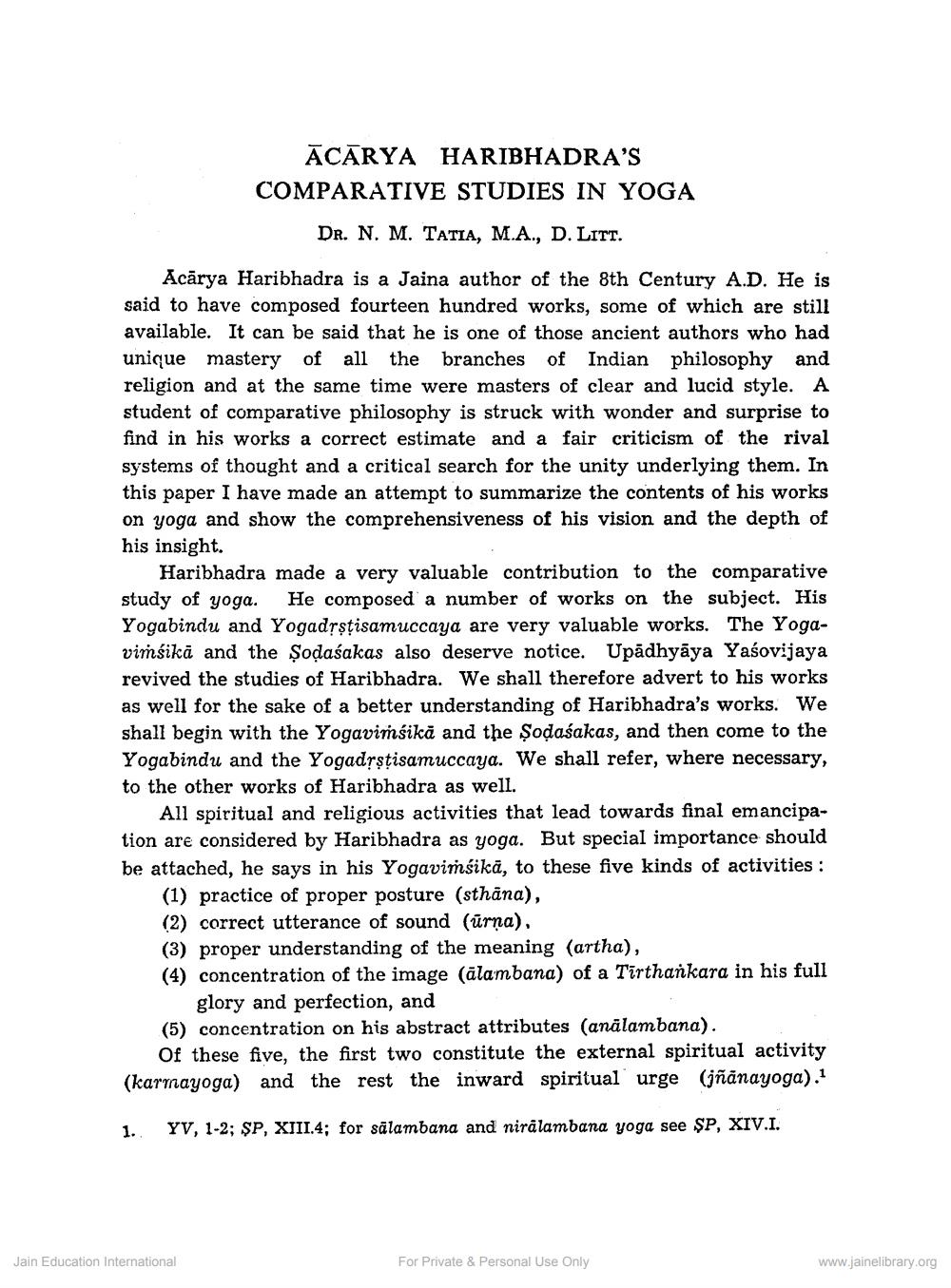Book Title: Acarya Haribhadras Comparative Studies in Yoga Author(s): Nathmal Tatia Publisher: Z_Vijay_Vallabh_suri_Smarak_Granth_012060.pdf View full book textPage 1
________________ ĀCĀRYA HARIBHADRA'S COMPARATIVE STUDIES IN YOGA DR. N. M. TATIA, M.A., D. LITT. Acārya Haribhadra is a Jaina author of the 8th Century A.D. He is said to have composed fourteen hundred works, some of which are still available. It can be said that he is one of those ancient authors who had unique mastery of all the branches of Indian philosophy and religion and at the same time were masters of clear and lucid style. A student of comparative philosophy is struck with wonder and surprise to find in his works a correct estimate and a fair criticism of the rival systems of thought and a critical search for the unity underlying them. In this paper I have made an attempt to summarize the contents of his works on yoga and show the comprehensiveness of his vision and the depth of his insight. Haribhadra made a very valuable contribution to the comparative study of yoga. He composed a number of works on the subject. His Yogabindu and Yogadrstisamuccaya are very valuable works. The Yogavimśikā and the Sodaśakas also deserve notice. Upadhyāya Yaśovijaya revived the studies of Haribhadra. We shall therefore advert to his works as well for the sake of a better understanding of Haribhadra's works. We shall begin with the Yogavimśikā and the Sodasakas, and then come to the Yogabindu and the Yogadęstisamuccaya. We shall refer, where necessary, to the other works of Haribhadra as well. All spiritual and religious activities that lead towards final emancipation are considered by Haribhadra as yoga. But special importance should be attached, he says in his Yogavimsikā, to these five kinds of activities : (1) practice of proper posture (sthāna), (2) correct utterance of sound (ūrņa), (3) proper understanding of the meaning (artha), (4) concentration of the image (älambana) of a Tirthankara in his full glory and perfection, and (5) concentration on his abstract attributes (anālambana). Of these five, the first two constitute the external spiritual activity (karmayoga) and the rest the inward spiritual urge (jñānayoga). 1. YV, 1-2; SP, XIII.4; for sālambana and niralambana yoga see SP, XIV.I. Jain Education International For Private & Personal Use Only www.jainelibrary.orgPage Navigation
1 2 3 4 5 6 7 8 9 10 11 12 ... 14
